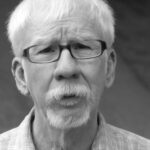

An epic of Chicano existence in the last half of the 20th century and the first decade of the 21st, Reyes Cárdenas’ work boldly depicts the outrageous ironies and wildly brutal truths of our humanity.
-Carmen Tafolla, Poet Laureate, City of San Antonio
No one is safe from the satiric wit of Reyes Cárdenas. This Chicano master of Anti-Poetry exposes social truths in a cackling lexicon of critical insight, wry puns and hatchet wordplay. His tone leaps from savage to the absurd, from ironic to dry, from bitter anger to tender concern. He must be among his “Survivors of the Chicano Titanic,” who reveal “That swaggered/humility.”
Steve Bennet, San Antonio Express-News
Organized mostly in chronological order, this book is a 40-year retrospective of Reyes Cárdenas’ life and work written from 1970-2010.
The book is divided into the following 11 sections: Selections from Chicano Territory (1970); Los Pachucos y La Flying Saucer (1975, the only novella in this anthology, originally published in Caracol magazine); Selections from Anti-Bicicleta Haiku (1976); Selections from Survivors of the Chicano Titanic (1981); Elegy for John Lennon (1982); Selections from I Was Never a Militant Chicano (1986); Homage to Robinson (2008); The Collected Poems of Artemio Sánchez (2009); Meeting Mr. Incognito (2010); Poems from chicanopoet.blogspot.com (2004-2010); and From Aztlan to the Moons of Mars: A Chicano Verse Novela (2010). Of the eleven sections, five are selections from previous publications, and six are new, never before published collections of poetry.
This book also features cover artwork and 11 original black and white title-page illustrations for each section by San Antonio artist, L.A. David; plus, an introductory essay on Reyes’ work by noted Chicano literary critic, Associate Professor of English, and Director of the Mexican-American Studies Center at Texas Lutheran University, Juan Rodríguez.

